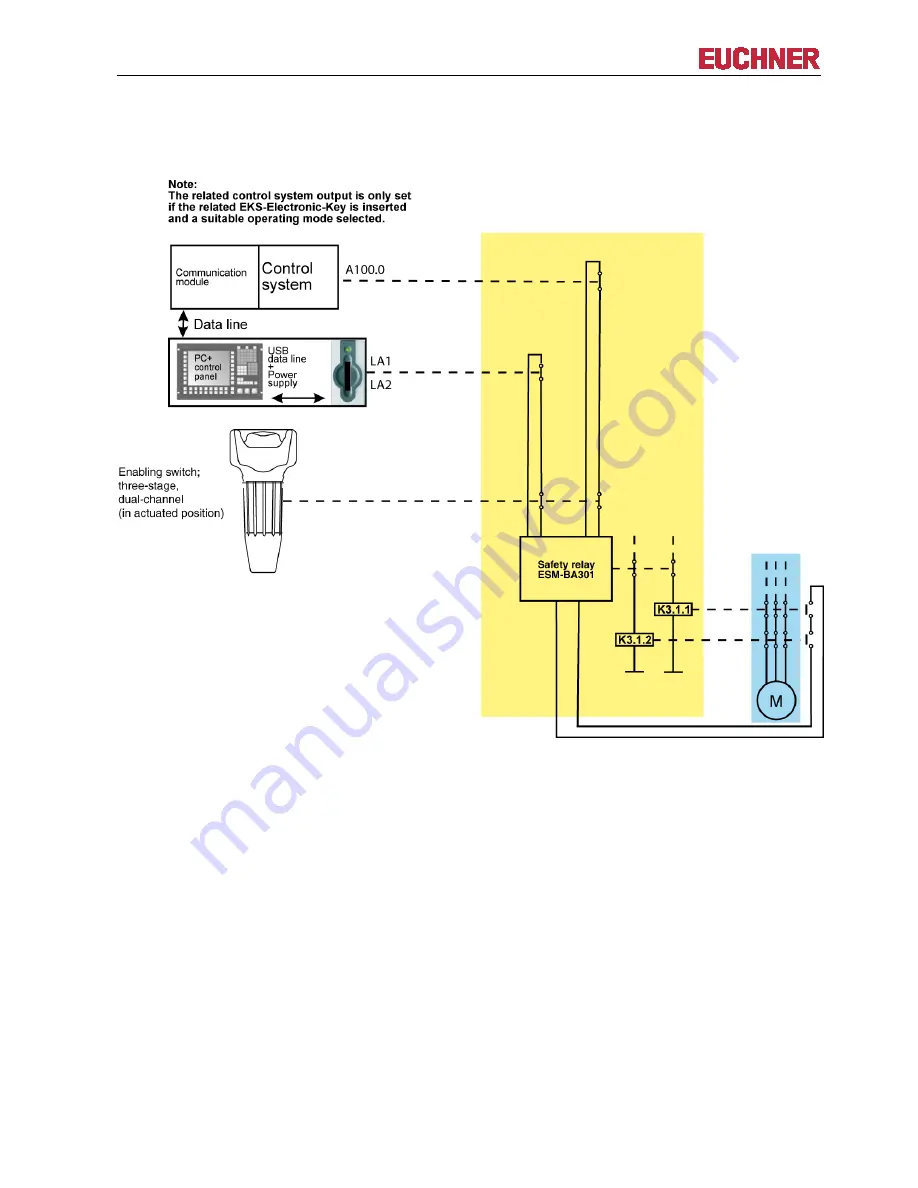
Manual EKS Electronic-Key Adapter USB
Page 16/44
Subject to technical modifications
094485-04-11/13
6.2.1 Connection example with enabling switch (Cat. 3/PL d)
Figure: Principle of operation (illustration with selected operating mode and all components in actuated position)
6.2.1.1 Description of the application example with enabling switch
The danger area on a machine is secured with a fence. To make set-up work on the machine possible with the
safety door open, an EKS
FSA
system is integrated in conjunction with a control system, an enabling switch and
a safety relay. The safety relay must comply with the following requirements:
Detection of short-circuits and earth faults. A short-circuit can be detected in the safety path in the circuit
described due to the fact that both the positive path and earth path of the safety relay are switched. In this
case, the safety relay deactivates its safety outputs.
Simultaneity monitoring: The safety relay must detect whether the safety inputs are switched practically
simultaneously. If this is not the case, the safety outputs are not switched and the unit switches to fault
state. A renewed start is possible only after the enabling switch has been released and then operated again.
The switching contact LA1/LA2 is closed after the insertion of the Electronic-Key. The EKS
FSA
is coupled with
a PC. After the insertion of the Electronic-Key, the control system checks whether the key is authorized for work
in the selected operating mode. If this is not the case, the operating mode cannot be set. If suitable access
rights are available, the control system gives the instruction to the switching contact A100.0 to close.
















































